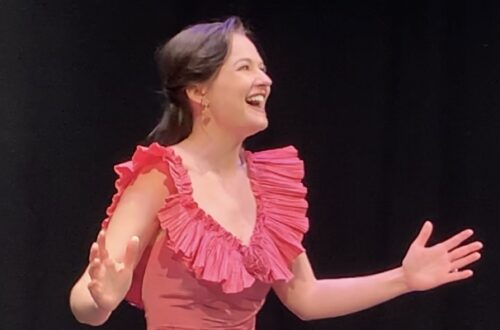Academic
Selections from academic coursework, focusing on music and theatre scholarship, music therapy, linguistics, and linguistic anthropology.
-
My Fair Lady: Understanding Eliza’s Transformation Through Language
New York University, 2019. Hey, guys! For today’s #WeeklyWednesday, I decided to share a practice take I made of a research presentation for one of my courses at #NYU (it’s weird sometimes “performing” or talking alone in my apartment in front of a camera ? I think it went pretty well and definitely felt more natural in person!). I hope you enjoy hearing my questions and ideas about Eliza’s development throughout “My Fair Lady” from a sociolinguistics/linguistic anthropology lens – and that it gives you some good food for thought! Things here are going well – just much, much busier than I’d like (it’s not a sustainable pace right now!).…
-
Vocal Music Therapy
New York University, 2019. Music Therapy. In The Theory and Practice of Vocal Psychotherapy (2008), Diane Austin wrote, “No matter what population a therapist works with…and no matter what the therapist’s primary instrument may be, the most healing connections seem to occur through the voice” (p. 19). The effectiveness of using the voice in music therapy has been echoed in much of the literature we have read as our course has progressed, and as a singer, I have found this particularly interesting and encouraging (Austin’s and Acosta’s [2013] research has been especially enlightening). Some of the reasons working with the voice can be so powerful therapeutically stem from physiological benefits…
-
Social Messages in “The Sound of Music”
New York University, 2019. Musical Theatre History. Mother Abbess: “These walls were not made to shut out problems. You have to face them. You have to find the life you were born to live.” Maria: “How do I find it?” Mother Abbess: “Look for it. Climb every mountain… till you find your dream.”[1] These words first inspired audiences 60 years ago, and their message of facing one’s problems and persisting against odds to pursue an authentic life has become universal – echoed in recent megahits like Frozen and Wicked, and substantiated by decades of research in the social and behavioral sciences that simply did not exist when they were penned.…
-
“The Merry Widow” and Women’s Roles
New York University, 2018. Musical Theatre History. “The arts are an even better barometer of what is happening in our world than the stock market or the debates in congress.” Hendrik Willem Van Loon, Dutch-American historian, journalist, and author. The arts have always reflected society – often depicting cultural values and norms, satirizing persistent problems, highlighting changes that are brewing, and pushing boundaries. The Merry Widow provides a revealing lens through which to examine established and changing gender roles and expectations in the West around the turn of the twentieth century. From Henri Meilhac’s 1861 comedy L’attaché d’ambassade, the team of Viktor Léon and Leo Stein (librettists) and Franz Lehár (composer)…
-
An Analysis of Language Ideologies in Disney’s “Moana”
University of California, Irvine, 2017. Linguistic Anthropology. [Assignment prompt: Analyze language ideologies in a popular animated film released after 1994 and intended primarily for children. Reference Rosina Lippi-Green’s article “Teaching children how to discriminate,” in English with an Accent, 79-103. London and New York: Routledge, 1997.] “A smooth sea never made a skilled sailor” Franklin Delano Roosevelt a Inspired by the remarkable voyaging heritage of early Polynesians and their mythology – particularly the shapeshifting, trickster demigod, Maui – Disney creatives, led by Ron Clements and John Musker, and a team of Pacific Island experts, worked for 5 years to craft Disney’s 2016 film Moana (Robinson 2016). Not only does Moana…
-
A Description and Analysis of the Crossover Classical Vocalist Speech Community
University of California, Irvine, 2017. Linguistic Anthropology. Gumperz. “eeeeEEE ooOOO! Whoop! Whoop! Bzzzzz... Zuh! roAR!” Newcomers are often surprised by the cacophony of vocalizations that greet them upon entering one of my community’s primary domains. While strolling through orderly rows of small, semi-soundproofed, glass-fronted enclosures, visitors may observe a single subject lying on the floor, flopped in half like a ragdoll, standing, arms raised in victory, or possibly manipulating the face: nose pinched, tongue sticking out, cheeks smushed… This description clearly orients us in the jungle of a musical community – specifically, a college practice room hall, filled with budding singers. This paper provides a basic description and analysis of…





